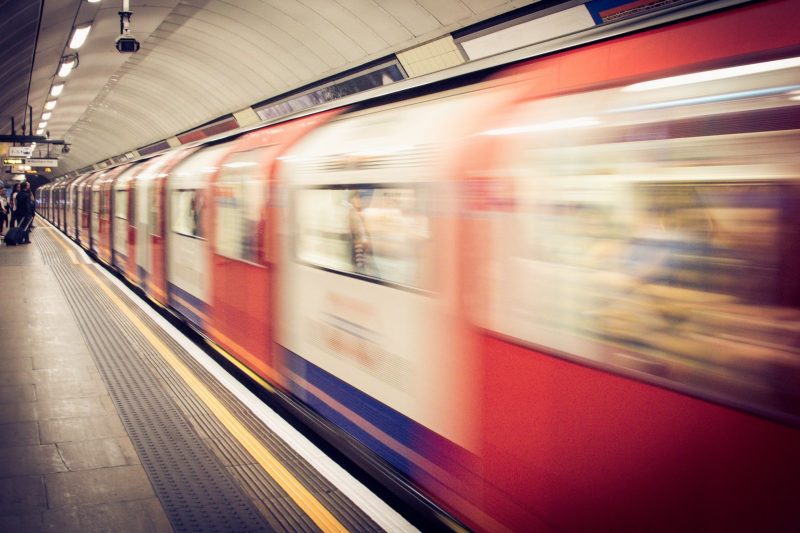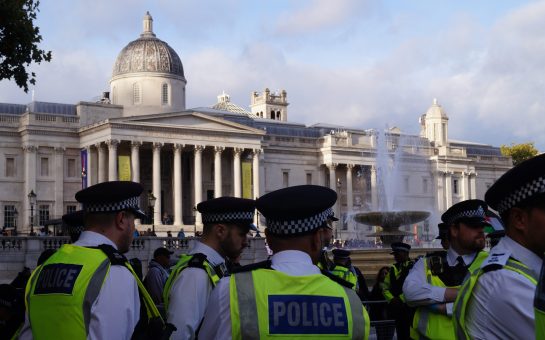Texting the British Transport Police to report a crime has increased to above pre-pandemic levels, though it still does not reach the top three methods of reporting.
All commuters will be familiar with the phrase ‘See it. Say it. Sorted’ splashed across tube stations and heard over the tannoy and British Transport Police data shows an uptake of passengers using the feature.
There has been a 142% increase in the number of reports being made by text message from 2022/23 to 2023/24, and is now higher than pre-COVID-19 pandemic levels.
Yet, texting the British Transport Police is only the seventh most used way to make a report to police.
Police are more likely to discover a crime on London’s public transport than a victim or witness using ‘See it. Say it. Sorted’ and online crime reports are by far the most common way to report crime.
Teacher Francesca Robinson has texted the British Transport Police on both National Rail and the Underground.
Most recently, in February, she texted about someone unconscious on the Victoria line and was asked to try and wake the person and inform Transport for London (TfL) staff.
She said: “I thought this was an interesting response because what I was using it for was to ask someone to come onto this Tube.
“I felt like I was being asked to sort it. I expected to see it, say it, and it be sorted.”
Francesca said she likes being able to text the police discreetly and did not expect to be involved in any confrontation.
She feels that it helps deal with the bystander effect, and was disappointed with her recent experience.
There may be a disconnect between what the service is intended for and what passengers are using it for.
The service is intended to be used to report crime and suspicious activity, but this case reveals that the may be a gap in support for passengers who are trying to report other issues on London’s public transport.
‘See it. Say it. Sorted’ is ubiquitous across public transport, and although some passengers may find it repetitive, Francesca explained how seeing an advertisement was what prompted her to use the feature.
She said: “I can never remember the number, but it was in front of me on the tube, so I used it.”
A British Transport Police spokesperson said: “Just before 3pm on 17 February, we received a text to 61016 informing us of a man who seemed to be homeless sleeping on a Victoria Line train towards Brixton.
“Our First Contact Centre responded asking the informant to alert staff at one of the stations about the man in case he could not be woken up and needed an ambulance, and was asked if the man appeared to be breathing.
“We encourage all passengers who see or experience crime to report it to us so we can take action. They can discreetly report crimes or concerns via text 61016 and we urge people to ensure they save the number in case they ever need it. In an emergency, always call 999.”
There are other alternatives to directly contacting the police.
Independent charity Crimestoppers offers an anonymised system for victims and bystanders to report a crime.
Crimestoppers, London regional manager, Alexa Loukas, said: “If you are a bystander and you’re travelling on the London Underground and you see something that doesn’t feel right or you have witnessed a crime, you can contact us without ever having to reveal your identity, speak to the police or give a statement or go to court.
“Our guarantee of anonymity has never been broken in the 37 years we have been operating. You will have done the right thing by contacting us.”
Crimestoppers’ free phone line is open 24/7, as is their Fearless line, specifically for young people.
Loukas said: “We don’t have any kind of time limits on calls, so our call handlers are specially trained and will take as long as it needs.”
The overall numbers of reported crimes across underground and railway stations have been rising consistently post-Covid and have now surpassed the pre-pandemic numbers by 15%.
As of April, Tube usage has been between 76% to 86% of the pre-COVID-19 baseline, yet the number of crimes reported has increased above pre-pandemic levels.
The overall increase in crime across London’s public transport cannot be attributed to a single reason, however, a rise in reporting along with increased passenger demand may play a role.
TfL cite a 2.8% passenger demand increase from January-August 2023 to January-August 2024.
TfL’s Director of Security, Policing and Enforcement, Siwan Hayward, said: “Significant effort is underway to tackle serious violence, sexual offences and harassment, robbery, and hate crime.
“As part of this, we have been encouraging and making it easier for customers and colleagues to report incidents so action can be taken.”
Featured Image Courtesy of Dan Roizer via Unsplash





Join the discussion